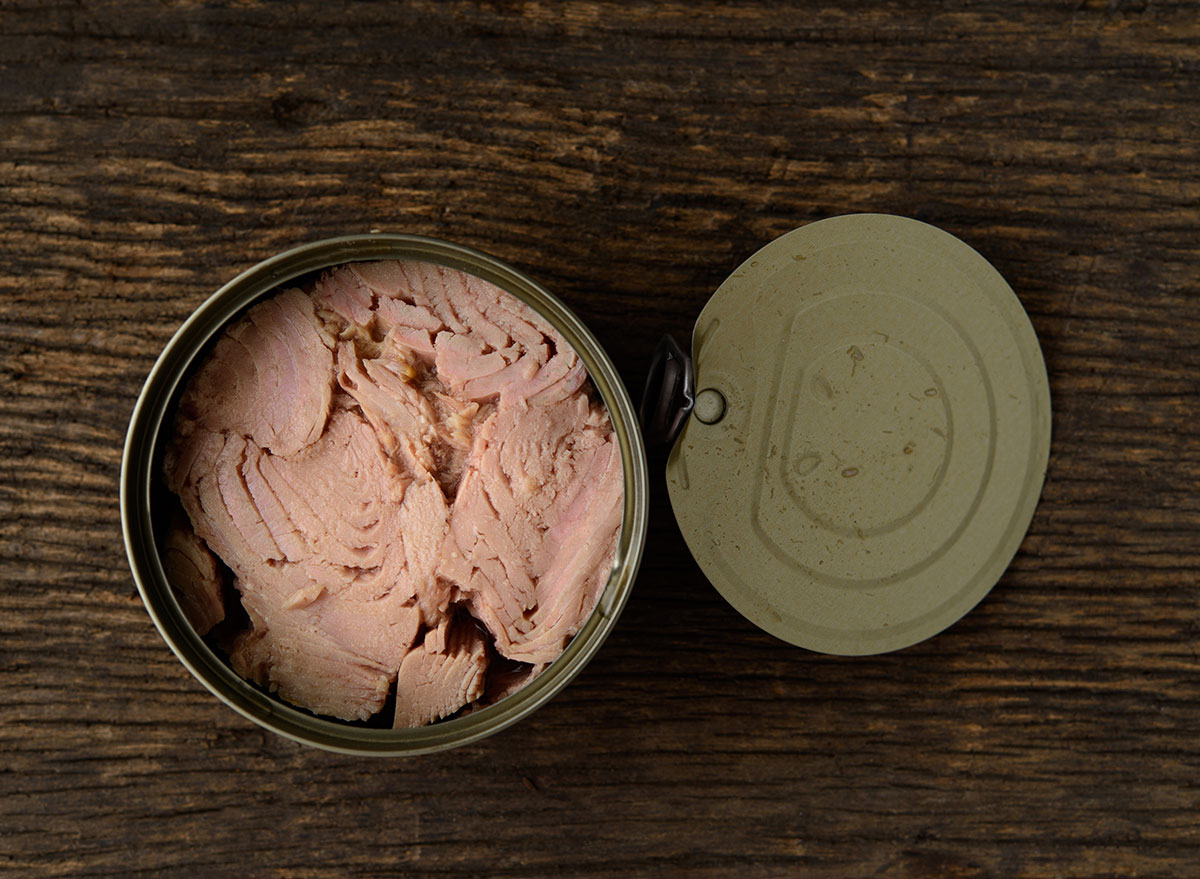There are countless benefits of canned tuna even before you start looking at the nutrition label. It’s shelf-stable, inexpensive, and can be used in tons of different meals from salads to sandwiches—or of course thrown on a classic tuna melt.
As far as nutritional benefits, canned tuna has plenty, though it is important to not overdo it with this pantry staple, as too much tuna could lead to mercury poisoning. For the most part, though, incorporating canned tuna into your diet can be a great addition because of all the positive effects it can have on your body.
So if you enjoy that classic tuna melt on a daily basis, or like adding tuna onto your salad, here are a few things you should know about what happens to your body when you eat canned tuna. And for more healthy tips, be sure to check out our list of 6 Best Canned Tunas on the Market, and 4 to Stay Away From.


Adding protein to your diet can be extremely valuable because it will make you feel fuller for longer and, ultimately, consume fewer calories. Canned tuna does just that. According to the USDA, one can of oil-packed tuna contains 46.6 grams of protein, while one can of water-packed tuna contains 31.7 grams of protein. Given the fact you should be consuming 0.36 grams of protein per pound of body weight, just one can of tuna could be most if not all of your daily needs met. That sure is an efficient way to get your protein.
Here are The Best Proteins for Women, According to Dietitians.


Thanks to the omega-3 fatty acids found in canned tuna, you’ll be strengthening your brain and eye function, just by eating that tuna sandwich for lunch. The DHA, an omega-3 fatty acid, is known to carry properties of improving memory. Additionally, it also has the effect of reducing inflammation and removing symptoms of dry eye. So if you were looking for a reason to start buying canned tuna, now you have two.
And if you need to incorporate more omega-3 fatty acids into your diet, here are 26 Best Omega-3 Foods to Fight Inflammation and Support Heart Health.


Even though the canned tuna packed in oil does have some benefits like having more protein and flavor than when packed in water, oil-packed tuna has more calories, fat, and could lead to weight gain. Let’s look at the numbers: oil-packed tuna contains 56 calories per ounce and 2 grams of fat, while water-packed tuna contains less than half the calories at 24 per ounce and less than 1 gram of fat. Though it’s not a make or break, everything else being equal, you should go for the water-packed tuna if you’re looking to take in fewer calories and fat.
READ RELATED: Covid is now LESS deadly than the flu, scientists say
Make healthier meals with your tuna instead with one of these 13 Healthy Things You Can Make With a Can of Tuna.


One ingredient found in all canned tuna is sodium, which, in large quantities can lead to bloat. According to the Linus Pauling Institute, a can of tuna—no matter if it’s oil-packed or water-packed—contains about a quarter of your daily sodium intake on average. Even though sodium is essential for regulating body fluids, going overboard could lead to bloating. So, it’s important to be conscious of the amount of canned tuna you’re eating each day in order to stay within your sodium limits.
If you’re still feeling bloated, here are 31 Foods to Reduce Bloating and Help De-Puff.


Let’s preface this by saying that canned tuna has significantly less mercury than fresh tuna, which means you can eat it more regularly. As a neurotoxin, mercury is something that should be avoided when possible. When you see a tuna can with the label “light tuna” that means it contains less mercury than albacore tuna. According to Livestrong, “light tuna” can be eaten by adults once a week without a problem. So stick with the idea of eating everything in moderation, and you should be able to avoid mercury poisoning and eating too much canned tuna.
Here are some more deep dives into some common foods:
What Happens When You Eat Ground Beef, Says Science
What Happens When You Drink a Glass of Wine Every Night
Rachel Linder
Source:










